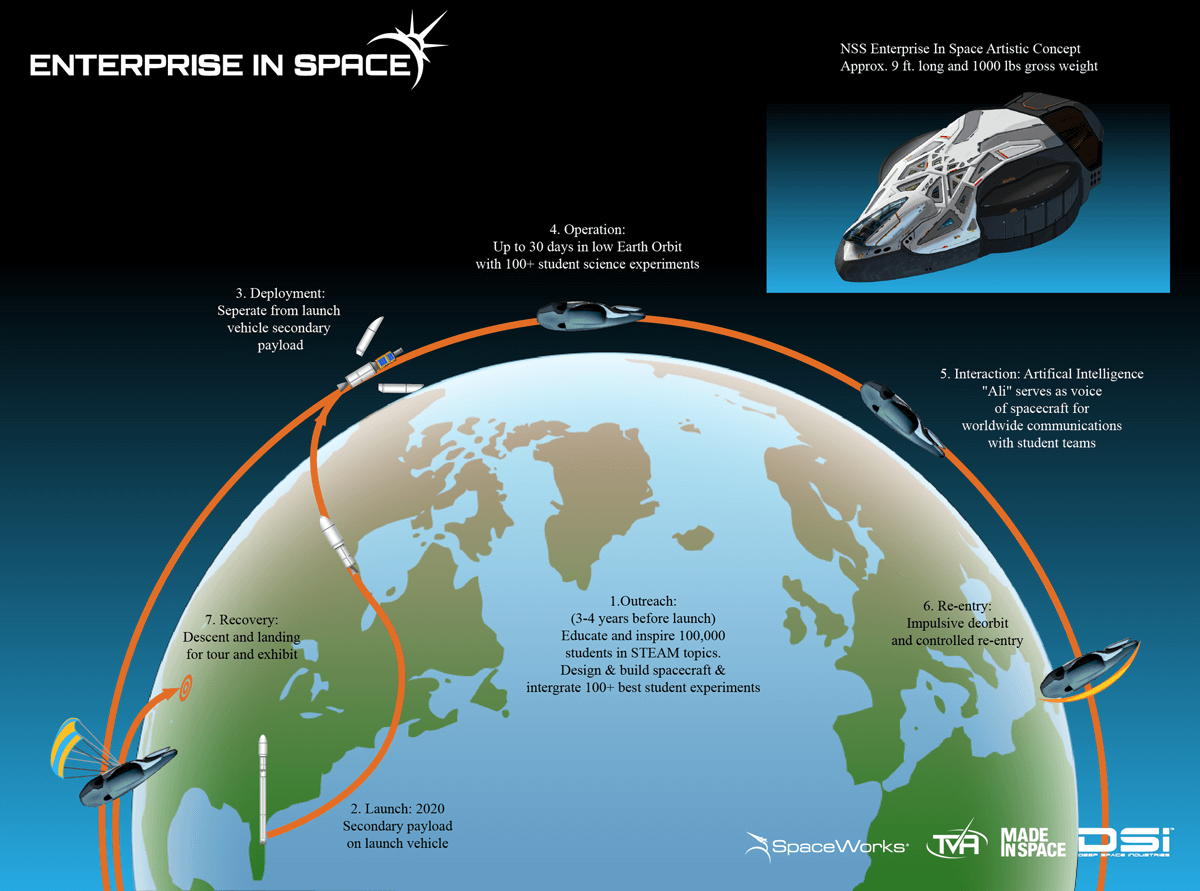If crowdfunding succeeds, the “Enterprise” spacecraft will be launched into Earth orbit. It will be the first 3D printed airframe in space with extensive 3D printed components.
Enterprise In Space (EIS) are an international project of the non-profit National Space Society. They have announced a partnership with Made In Space, Inc. to bring this project, which has an interesting twist, to life.
The NSS Enterprise will not only be the first 3D printed airframe in space, it will also carry over one hundred passive and active student experiments.
These will be developed by children of all ages and will be sent into space and back to Earth. International challenges will also be hosted which will begin selecting K-12 and university experiments to be installed aboard the spacecraft.
Who is Involved in Creating the Airframe?
In February, Stanley Von Medvey, a video game artist, won the design concept which EIS held at the Enterprise In Space Orbiter Design Contest, in which participants were encouraged to submit a design concept for the Enterprise.
EIS are now preparing to bring this winning design into reality. The satellite, which will be 1,000 pounds and eight foot long.
It will be constructed by Made In Space and the EIS engineering team, along with the EIS aerospace partners SpaceWorks Enterprise Inc., Deep Space Industries, Terminal Velocity Aerospace and The Global Aerospace Corporation.
The partnership with Made in Space was an obvious one, as they are an American-based company who specialize in the engineering and manufacturing of 3D printers for use in microgravity.
The students whose projects will be housed in the spacecraft will also be able to find out about the status of their experiments through the use of a cloud-based artificial intelligence platform called ‘Ali’.
EIS Program Manager Alice Hoffman said: “Ali will be the voice and mind of the NSS Enterprise, communicating with her virtual crew just as the computer aboard the Star Trek ships did, in natural language, through the student teams’ own internet terminals. Through the EIS project, we hope to demonstrate that Ali can become a personal tutor and mentor to every student, allowing them to see the vision of a brighter future and providing them with the education to fully participate.”
So far, EIS has secured $27.5 million in donations for the project but they will rely partially on public donations for the construction and launch of the orbiter.
If you’re interested in contributing to this project, you could become a virtual crew member. This involves having your name sent into space on a chip and returned to Earth for display at a major museum.
If you’re feeling more generous, then larger donations from corporations, individuals, and foundations will be rewarded with branding rights for the spacecraft and portions of the AI deployed on the NSS Enterprise.
EIS expects to launch the 3D printed satellite by 2020. In the mean time, you can find more information on their website.
License: The text of "Spacecraft “Enterprise” Is Looking for Funding" by All3DP is licensed under a Creative Commons Attribution 4.0 International License.

